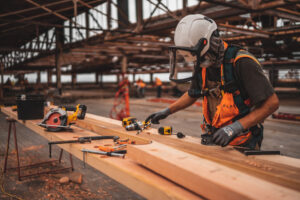How to automate construction RFI and drastically reduce resolution delays

Importance of construction RFI – issues with non-digital RFI and the need for automation
When it comes to construction RFIs, it is time to change our mindset. Today, we need to view RFI process as an opportunity to streamline and improve both design and engineering while also making construction more effective and efficient. The need of the hour is an advance technology solution that converts into productivity gains with prompt, accurate and user-friendly RFI solutions. By asking the right questions in the correct format, your contractors will provide valuable insights and ideas, resulting in a faster RFI turnaround. Let us understand RFI in construction in detail and how automation in RFI workflows is the future.
Keep reading for,
RFI in construction
What is RFI in construction?
A request for information (RFI) arises during construction from multiple vendors and teams working on the project. The construction RFI is a formal written document where stakeholders seek any clarifications or information gaps that may arise in drawings, plans, specifications, and agreements before or during the project’s build phase. Timely clearing queries eliminate time loss during construction.
Relevance of RFI across various phases
Construction RFIs are a way of communication during the design or build phases between the general contractor or supplier and the owner/architect. Often, an RFI will be sent out by contractors or subcontractors while the construction is underway. Contractors can use them at any project stage, whether feasibility, design, bidding, or build phase. For instance, a contractor may submit an RFI to understand project details better, revise estimates, and develop a superior quote during bidding. Suppliers and manufacturers can also use construction RFIs to submit instructions, request additional info on the building’s intended use, and recommend substituting components.
Significance of RFI during the build phase
Once a project is in the build phase, RFIs aid in accomplishing timelines. With timely and comprehensive responses to queries, build phase RFIs clarify doubts to ensure the project delivery is as per the specifications. During the build phase of construction, RFI can arise when a contractor or a vendor
- Needs more information or clarification,
- Proposes an alteration or replacement,
- Identifies a problem
Use of RFI in construction
There are various reasons for RFI in construction. Let us have a look at their typical use cases in a construction project.
| Design coordination | When architects, engineers, developers, etc., get clarifications on items like the design, architectural plans, drawings, and other related documents. |
| Construction coordination | When project managers, supervisors, etc., get clarifications on items like schedules, procedures, safety items |
| Construction issues | When the contractor finds construction feasibility problems in the design |
| Sequencing | When there is a change in the order of activities due to material/resource availability constraints, value engineering, etc |
| Design alterations | When there are design alterations in the project during construction |
| Clarification in design | When project managers or supervisors seek more information related to the design for a better understanding |
| Material change | When there is a request to replace a specified material in the design document |
| Deficiencies in plans or design documents | When there is an error or omission in plan drawings, specifications, etc. |
| Site conditions | When there is a design conflict based on situations on site |
Need for RFI in construction
RFIs are critical for any construction project as they influence quality, budget, risk and liability. Providing prompt, complete responses to RFIs helps construction projects stay on time and within budget. It helps to facilitate the supervisory role by fostering two-way communication between all parties involved, keeping builders in check across all aspects of construction, including quality control and safety. An RFI also acts as proof if there is a dispute or litigation at a later stage. They can help create and add value to your project documentation, specifically when things don’t run smoothly within the build phase. In negligence situations, RFIs can become a defence for claims of unsatisfactory works undertaken by a party. Construction litigation is expensive and time-consuming, so handling RFIs with care is essential.
How to create an effective construction RFI?
The basic process of construction RFI involves asking and answering project queries. The project manager or general contractor generally mediates them. A contractor or subcontractor raises RFI, sending it to the architect or responsible consultant to review and respond. If the response is satisfactory, then RFI is closed; if not, then resubmitted for further clarification. Construction RFIs are preferably automated and have a fixed format and template for easy understanding. Here are the basic steps followed to create a successful construction RFI 
- Create an RFI
A subcontractor writes and submits a construction RFI to the general contractor to clarify doubts about the design, contract, specifications, or standards.
- GC answers the RFI
If possible, the general contractor gives a precise response to the queries in the RFI.
- Consultants answers the RFI
If there is a need for further information, the architect, client, consultant, engineer or subcontractor receives it
- Receive the RFI response
The subcontractor receives the RFI once the concerned team or person responds to the RFI with sufficient detail.
- Close the RFI
Once the subcontractor is satisfied with the response, work commences again; else, the subcontractor revises and resubmits the RFI.
Issues with non-digital, not templatized RFI
We agree that RFIs are an essential part of any construction project. While submitting and replying to construction RFI sounds like a straightforward process, however, a construction project can easily get overwhelmed with them. They often become a source of delay, conflict, expense, and even legal claims. Major issues with non-digital, non-template RFI include:
- The process is not standardized, and with multiple parties involved, each participant has their version of RFI, which creates confusion.
- All the vendors are not following the same RFI format and numbering system, making it difficult to communicate.
- RFIs take time to respond and increase the cost. It can result in work at the site getting delayed
- Often, too many queries are asked in the same RFI.
- One of the common issues is complicated language and RFI format.
- RFI is improperly addressed and doesn’t reach the concerned person in time.
- There is missing information in the RFI
- There is no solution suggested to the issue in the RFI response.
- Proper RFI protocol not followed
- Delayed response
Future of digital RFI
Digitization is the perfect solution to all the RFI issues. Using a fully automated, vertically integrated tool to store, track, and monitor RFIs ensures higher accuracy, speedy communication and information sharing. You can store all of your project’s RFIs in a central location, share them among team members simultaneously, and allow design and engineering team members to collaborate on responses. These applications also enable you to create an audit trail showing when someone submitted an RFI, who received it, and what action they took.
Improving RFI as an advanced product
Here are a few tips on how to generate an RFI and things to look for when selecting an RFI tool to manage the construction workflow of your project:
- Make sure it is 100% fully automated.
- Most RFI tools lack vertical integration to streamline the process as RFI can exist on multiple systems across the contractor landscape. Double-check for the same
- It should have centralized data access and management.
- Standardized process and format are essential. Have a proper RFI process for your project, educate all the teams involved with the RFI procedure, and make sure they follow it.
- Keep the language and request forms simple. Also, limit one question per RFI and specify all the information needed.
- There should be a chat feature for instant and improved communication.
- There is transparency in information transfer.
- Ensure the concerned teams receive real-time notifications and follow-ups. And every RFI generated should have a timeline or end date for response.
- The automated software should use a proper numbering and naming system for RFIs.
- The RFI interface should ask to verify the information you are seeking doesn’t already exist.
- To avoid last-minute confusion and delays, the automation interface must prompt its user to study the construction documents before submitting the RFIs
- As an added feature, automated RFI can allow to propose solutions for the architect or engineer
As part of the construction management team, always provide sufficient time to the other party to respond, so plan and categorize RFIs by importance. Remember, RFIs are a means to raise questions and not express disagreements or opinions.
Advantages of Linarc’s construction RFIs
Linarc’s construction RFI solution is a fully integrated platform and is ideal for all project phases and stakeholders. The solution As a digitized solution, it supports all types of RFIs with custom workflows and automated routing. Linarc’s RFI solution eliminates much of the manual processes. With all stakeholders on the same platform, data flows in real-time thus eliminating costly delays. Inbuilt collaboration allows for instant response to queries. As per estimates, projects can improve their RFI response time by 20% using Linarc’s RFI solution. Know more about RFIs – Talk to Linarc




